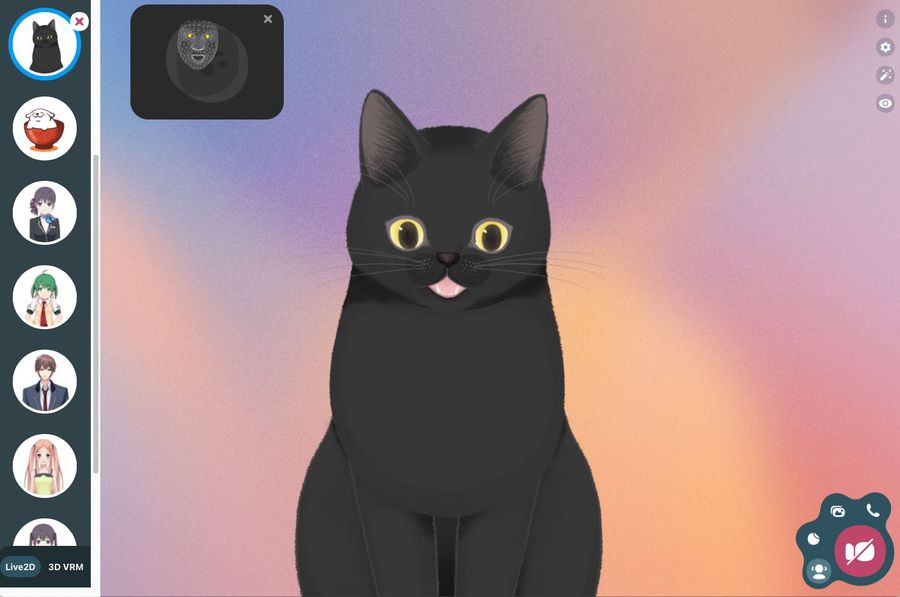Let's build the open metaverse
There’s a lot of noise and excitement around rise of virtual reality, shared environments, and something called the metaverse. Some of the biggest players in tech are eager to stake their claims, telling us that the metaverse is the Next Big Thing.
But the truth is, it’s already here. The open metaverse is *100 times as large *as any of the commercial platforms, in terms of what regular people have created. The metaverse is not going to be controlled by big tech. It’s being built on open tech by a wide—and wild!—variety of creators across the internet, right now.
Let’s explain what that means.
First, the basics: Legions of creators and millions of users have been chipping away at the metaverse for years. At Glitch, we want to give voice to all of these people and communities, so we don’t see just a single metaverse. We think the future is an open metaverse, built by a diverse set of stakeholders, from corporate behemoths to individual trailblazers. Sure, it’s high-tech experiences that happen in fancy VR headsets. But it’s also fun and silly stuff you build in your browser with friends.
The most exciting part is, this isn’t just the future: It’s an exciting, weird, fun, inspiring present that millions of people are already participating in, ready to welcome millions more.
In short, the open metaverse is centering creators, communities and a diverse set of implementations, rather than a top-down vision dictated by any one company. If it helps, think of the open metaverse as more of a multiverse—there are lots of different realities, and they overlap and intersect in interesting ways
The Arrival of the Giants #
The loudest players in current discussions of the metaverse are Facebook and Microsoft, each eager to extend their legacy strengths into the next generation of social technologies. Horizon Worlds is Facebook’s attempt to create a shared, virtual environment to the masses, putting their Oculus line of VR devices at the center of social technology. Microsoft wants to be a player, too; they’ve been working for years to bring their own social VR technologies to market in both software and hardware, like the business-focused Hololens.
While these tech titans have deep pockets, the truth is they’re catching up to an already-thriving market—and today’s creators aren’t sitting around and waiting for them to perfect their technologies.
That brings us to the open metaverse, and its constellation of different virtual technologies that go far beyond the limited visions of any one company. Together, the communities of the open metaverse are defining the future of virtual spaces for play, collaboration, exploration and expression.
What is the open metaverse? #
What it ain’t #
Just as important in understanding this vision is knowing what the open metaverse is not:
- The open metaverse is not dependent on hardware or software provided by any giant company, or creation or distribution platforms controlled by those companies
- The open metaverse does not require connections to blockchain-based technologies (though it certainly can use them where they help solve problems!)
- The open metaverse is not boring and awkward and primarily focused on how people have meetings, it’s about doing things that are valuable or meaningful or fun, and creating things that are as likely to be social and expressive as they are monetizable.
- The open metaverse is not some vague vision of the future that a company is trying to pitch, it’s just a way of looking at the many thriving, healthy, fascinating, rapidly-evolving community creations that already exist today, but are too often overlooked.
The Overlooked Metaverse #

There are many different subsets of the open metaverse, and some will be familiar to those who’ve been following the metaverse conversation, while others will not. Let’s consider some that get overlooked in many discussions.
- VTubers and virtual characters: The last decade has seen the rise of the VTuber, a fascinating cultural phenomenon where digital avatars are built and operated like puppets. Using motion capture and other cutting edge technologies, a wholly CG character can interact in real time with a streaming audience. And VTuber communities are often home for cultures and groups that get overlooked or marginalized in conventional gaming or media.
- **WebX**R: Sometimes called WebVR, WebXR is a blossoming creative field that uses the familiar building blocks of the open web to construct fully immersive 3D environments. A growing ecosystem of open source code is evolving daily to address the creative hunger of thousands. A-Frame, for example, provides the building blocks for 3D scenes that run on everything from mobile phones to the latest cutting edge VR devices. Three.js provides a framework for displaying 3D assets using web technologies. Perhaps most magically, Handsfree.js is a machine vision framework that can interpret gestures and map them into a virtual scene—no controllers required.
- Game-likes: This category of virtual spaces takes their navigation and visual cues from MMOs and other video games while not explicitly being about gaming. They provide a fun, lo-fi experience for community, exploration and expression without VR at all. Skittish, by XOXO’s Andy Baio, is a playful attempt at a shared digital space for digital events. While events presented on video call software cram everyone into a single, shared, flat context, Skittish provides a sense of place and movement. Like a party in meatspace, attendees can roam, clump up, mingle, and drift. Similarly, Gather.town provides a top-down, pixel art styled environment you can fully customize and use to host events, gather coworkers in a virtual office, or hang out with friends. For curators and museum goers, LikeLike offers a point-and-click adventure through exhibits right on your web browser. While none of these resemble plugging into The Matrix, they’re accessible, fun and ready to use right now.
- AR on current devices: Whether it’s playing Pokémon Go on your phone, or using your laptop to picture how a new piece of furniture would look in your living room, this is one of the most mature, and most overlooked, forms of virtual content that makes up the open metaverse. It’s especially powerful in that it can be combined with other existing capabilities on our smart devices, like location data or sensors. This is, of course, far from a complete list. Newer technologies like spatially-aware audio are rapidly joining this list, and we’ll of course see lots of development on the glossy, headset-focused VR that the biggest tech companies are pushing, too.
How Creating the Open Metaverse is Different #
When the web was just starting out, “serious” content creators were using complex and costly tools like Macromedia Director to make elaborate multimedia content. Even the early online services like AOL and MSN had proprietary creation tools that allowed for creating rich content. And the conventional wisdom was that the simple, open, text-based standards of the web couldn’t compete.
Of course, we know how that turned out. The nonstop innovation of the open web community not only caught up to what the proprietary platforms could do, it far surpassed them in reach and in creativity. We think that pattern is going to play out again, and the evidence we base that on is the fact that it’s already happening.
Building for the Open Metaverse on Glitch #

There are three things that make Glitch special, each building upon the next:
These factors have woven together to produce a thriving ecosystem of metaverse-style projects. We have hundreds of thousands of projects spanning VR and 3D.
In fact, right now, today, you can instantly remix dozens of potent example projects on Glitch for your experiments in VR. We didn’t build any of these. They’re labors of love from people passionate about the next frontiers of the web and social software, and proof that the metaverse is real—and bigger than any one company.
Some stuff is simple, and perfect for getting your feet wet if you’re new to the scene. You could remix a seasonal snowglobe, or riff on the latest absurdist orb memes.
But the technology goes much deeper. You can build sophisticated scenes with navigation and interaction. While this would be impressive enough, the community has gone deeper.
Realtime, multi-user environments, with avatars, are waiting for you to remix them right now. They’re a powerful foundation for 3D social projects.
Many of the most challenging technical problems already have example code provided to support advanced uses. You can incorporate 3D positional audio, stream users’ video into your 3D environment, even build a first-person shooter. All using free, open web technologies that will run on everything: desktop browsers, mobile phones, and the latest VR hardware.
The next chapters of the web promise more possibility than ever. We’re excited to support creators pushing the boundaries of immersive, social and open technologies here on Glitch. We hope you’ll dive in, join them, and build something fun.

